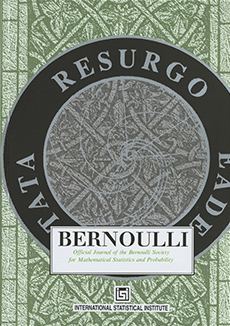Abstract
A coding of hierarchical structure in finite directed tree graphs was introduced by Robert Horton in 1945; after a modification by Strahler in 1952, this has become a standard river network code defined as follows. Edges along a path adjoining a source (valence 1 vertex) to a junction (valence 3 or higher vertex) are coded as order 1. Such a path of order 1 edges is also referred to as an order 1 stream. Having defined edges and streams of order i, one now recursively defines edges and streams of order i+1 by the rule that the `order 1' streams of the tree obtained by pruning the streams of order i (and lower) are assigned order i+1. This code has helped to identify a number of naturally occurring patterns in river network structure as well as in other naturally occurring dendritic structures. Let Ti,j(s) denote the number of order j < i junctions in a stream s of order i and let denote the sample average over all such streams s of order i. Empirically it has been observed that is, allowing small-sample fluctuations, approximately a function of i-j for large classes of river networks. A calculation of Ronald Shreve published in 1969 revealed that ETi,j = ½2i-j for the critical binary Galton-Watson distribution. This is our starting point. In particular, we introduce a more general notion of stochastic self-similarity and show that within a class of Galton-Watson trees both this and the consequent mean Toeplitz property are characteristic of the critical binary offspring distribution. In addition, we obtain interesting conditioned limit theorems corresponding to the invariance of the critical binary branching process under a pruning dynamic in the space of finite rooted trees.
Citation
Gregory A. Burd. Edward C. Waymire. Ronald D. Winn. "A self-similar invariance of critical binary Galton-Watson trees." Bernoulli 6 (1) 1 - 21, Feb 2000.
Information





